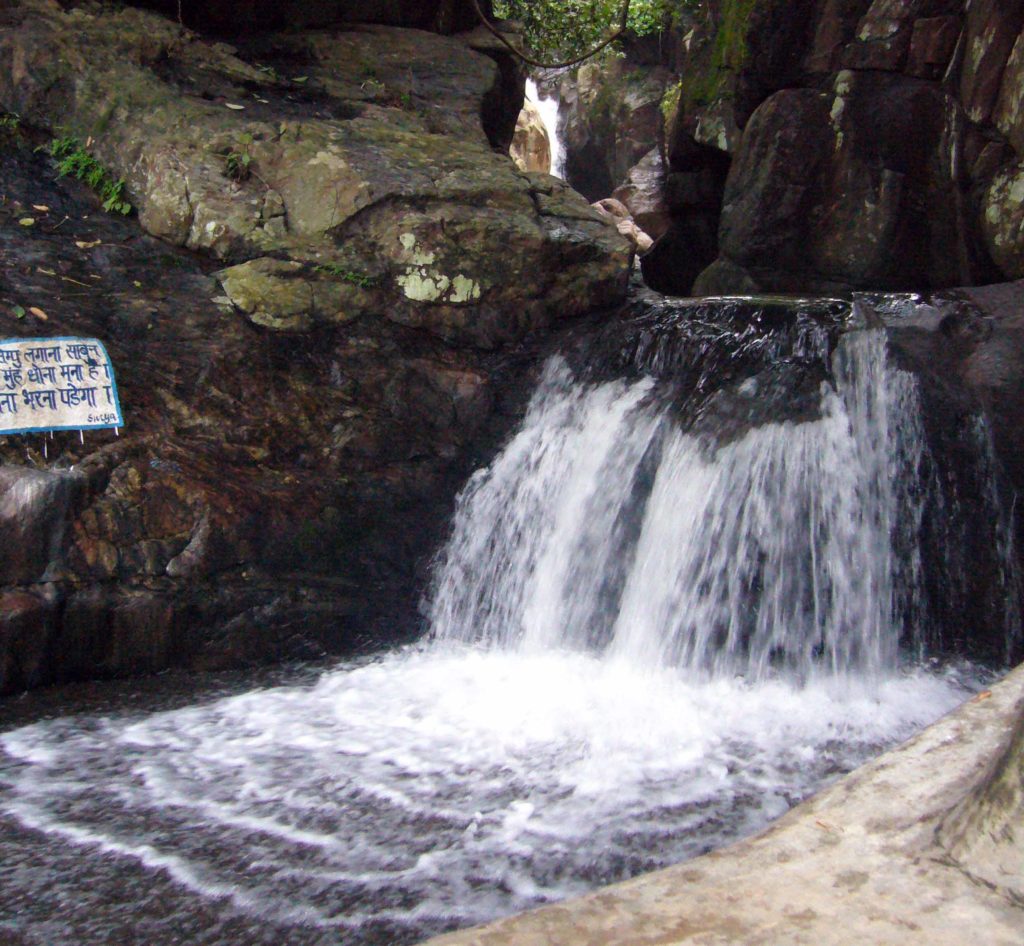The following oral narrative connected with this Pitha attests this reality. There is a pool called Haran-Papa in the bed of stream close to the Narsinghnath temple. The natural springs, which come down the Narsinghnath hills, create a pool of water at the foot of the hill close to Narsinghnath temple. The pool is called Haran-papa, the water of which is competent to wash away all sins.
As per the existing narrative, Lord Siva after killing the Go-Daitya (cow demon) could not liberate himself from his sin anywhere in the world. Lord Brahma informed Lord Siva about the manifestation of Ganga Devi in the shape of a stream in Gandhagiri and recommended him to take a holy dip in its water. Consequently, Lord Siva arrived here and took a dip in the holy water. Amazingly, Lord Siva got himself released of the stigma at this Tirtha (Senapati and Mahanti, 1971:14). Particularly, matching story is found related with the river Baitarani in other parts of Orissa. All the same, this narrative intends to communicate some information about specific event; provided that it can be correctly dated and appropriately interpreted as potential source of certain kinds of historical information. But dating and interpretation present a lot of difficulties. Nevertheless, the above narrative does suggest us to consider that Saivism was once popular and enjoyed predominance in this place.
There is an oral narrative concerning the formation of Chauhan Rajya in Patnagarh in the medieval period. By the time the Sultan of Delhi conquered Rajputana, a Rani of one of the Rajput houses fled away to save her honour and dignity after her husband was assassinated in the battle. This Rani is recognized as Ashavati and her husband is identified as Hammir Dev who lived near Mainpur in north India and was killed by the Sultan of Delhi. Subsequently, Asavati reached Borasambar, a small Binjhal Rajya. Borasambar was numerically dominated by the aborigines like the Binjhals and was a seat of tribal power. The Binjhal tribal chief of Borasambar took pity on the mother and gave her shelter, where she gave birth to a son named Ramai Dev who afterward became the originator of Chauhan dynasty in Patna.
Reportedly, Binjhals are Dravidian in origin. They worship swords, spears and arrows. They worship mother-Goddess specifically Lakheswari (the Goddess of Archery) and Dangar-Devta (the mountain deity). Possibly, the Binjhals are a hunting and martial tribe. They particularly worship Bindhyabasini who is their principal deity and Narsinghnath. They do not employ Brahmins in any ritual observance. They have their Binjhal priests for this purpose. Moreover, Bairagis or Vaisnavas are taken as Mantra-Guru. Almost every Binjhal takes Karna-Mantra that is, Mantras whispered in the ear (Karna). It may be understood that Binjhals seek to assert their interest and identities against Brahmins or power and authority of the Brahmins in the Hindu society. This reminds us one of the protests of Buddhism in opposition to caste prejudices or Brahminism. In addition, they worship deities of the Hindu pantheon along with their own deities, which may be accredited to the process of Hinduisation or Sanskritisation taken place afterward (Senapati and Sahu, 1968:103; Senapati and Mahanti, 1971:121; Senapati and Kuanr, 1980:93-94).
Chitrasen Pasayat is an OAS comments on culture

